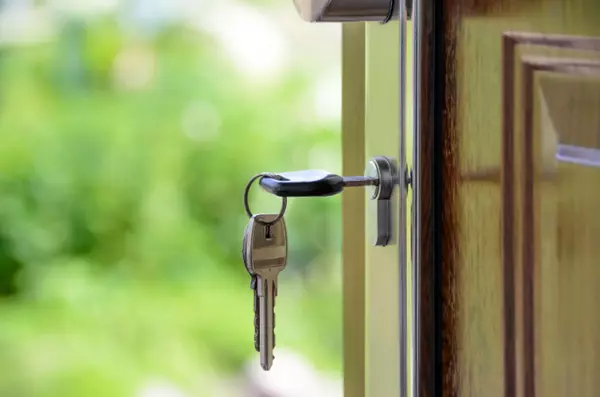Mastering the Art of Selling Your Home Steps to Prepare Your House for a Successful Sale

Selling your home is more than just listing it and waiting for buyers to come; it requires thoughtful preparation to ensure your property stands out and appeals to potential buyers. In a competitive real estate market, taking proactive steps to prepare your house can be the key to a quicker sale and a better return on investment. From deep cleaning and essential repairs to strategic staging and boosting curb appeal, every detail counts when presenting your home. This blog will guide you through practical, impactful steps to help you showcase your home’s best features and make the selling process smoother and more rewarding.

Steps to Prepare Your House for a Successful Sale
- Make Necessary Repairs
Why It Matters: Before listing your home, ensuring it’s in the best possible condition can make all the difference in attracting buyers and securing the best offers. Even small repairs can help demonstrate that your home is well-cared for, boosting buyer confidence.
Addressing these necessary repairs before listing your home helps you stand out in the market. Buyers appreciate a home that feels move-in ready and are often willing to make stronger offers when they don’t foresee significant future work. Taking these steps can pay off in faster sales and better final offers.
Tips:
- Fix Minor Issues - Replace cracked tiles, fix leaky faucets, patch holes in walls, and touch up chipped paint. These quick fixes can have a big impact on a buyer’s perception.
- Ensure All Systems Work
- Plumbing: Make sure all sinks, toilets, and showers are functioning without drips or clogs.
- Electrical: Test all light switches, and outlets, ensure that fixtures are in working order.
- Heating and Cooling: Ensure that the HVAC system is running smoothly. Routine servicing can reassure buyers that there won’t be hidden costs.
- Repair Doors and Windows - Fix any doors or windows that stick or don’t close properly. Replace any broken or cracked glass.
- Update Fixtures if Necessary - Replacing old cabinet handles, light fixtures, or faucets can give your home an updated feel without a major investment.
- Address Cosmetic Touch-Ups - Refresh any walls with scuffed or outdated paint colors. Neutral tones are best for creating a blank slate that appeals to most buyers.
- Repair Outdoor Features
- Curb Appeal Matters: Strong curb appeal creates an immediate sense of interest and sets the stage for buyers as they tour your home. When the exterior of your home looks inviting and well-maintained, buyers are more likely to feel that the interior has been cared for as well. Repair cracked walkways, patch up broken fence panels, and fix any exterior paint issues.
- Decks and Patios: If you have a deck or patio, ensure that boards are secure, and apply a fresh coat of stain or sealant if necessary.
- Consider a Pre-Listing Inspection - A professional home inspection can reveal hidden issues you might not have noticed. Addressing these problems before listing helps avoid surprises during the buyer’s inspection and can speed up the closing process.

- Improve Lighting
Why It Matters: Lighting plays a crucial role in how buyers perceive your home. Proper lighting makes spaces appear larger, cleaner, and more inviting, while dim or outdated lighting can make rooms feel smaller and less appealing.
Proper lighting enhances the overall look of your home and highlights its best features, making spaces feel larger, cleaner, and more welcoming. It sets the mood and helps buyers imagine living comfortably in the space.
Tips:
- Maximize Natural Light
- Open Curtains and Blinds: Let as much natural light in as possible by opening curtains, blinds, and shades. Clean windows to ensure they let in maximum sunlight.
- Sheer Curtains: If privacy is a concern, opt for sheer curtains that provide coverage but still allow light to filter through.
- Update Light Fixtures - Replace outdated or tarnished light fixtures with modern ones that add style and better illumination. Choose fixtures that complement each room’s design, giving a cohesive look throughout the home.
- Use LED Bulbs - Use soft, warm light (2700K-3000K) in living areas and bedrooms for a cozy feel, and cooler light (3500K-4000K) in bathrooms and kitchens for a brighter, cleaner appearance.

- Add Task Lighting
- Functional Spaces: In kitchens, install under-cabinet lights to illuminate counters and add more depth. In-home offices, use desk lamps to create a well-lit workspace.
- Bathrooms: Make sure vanities have bright lighting to enhance the appearance of these high-value spaces.
- Incorporate Accent Lighting - Use accent lighting such as wall sconces or track lighting to emphasize architectural details, artwork, or statement pieces.
- Add Lamps for Layered Lighting - Use a mix of floor lamps, table lamps, and wall fixtures to create different layers of light that make a room more inviting. Place lamps in corners or areas that may otherwise appear dark to eliminate shadows and brighten the space.
- Ensure Uniform Brightness - Avoid areas that are much brighter or darker than others, as this can make the space feel uneven. Consistent lighting helps create a smoother visual flow through the home.

- Highlight the Kitchen and Bathroom
The kitchen and bathroom are often deal-breakers in a home sale. These rooms can significantly influence a buyer’s decision, so it’s essential to showcase them in their best light.
Both the kitchen and bathroom are high-traffic areas where functionality and style are key. Buyers often make quick judgments about these spaces based on their condition, and a clean, well-maintained kitchen and bathroom can increase your home’s perceived value. By paying attention to details like cleanliness, modern updates, and storage, you can ensure that these rooms stand out and help seal the deal in the selling process.
Sievers Real Estate brokers can guide you in evaluating whether remodeling is essential and whether it makes financial sense, helping you make an informed decision before hiring a contractor.
- Set the Right Price

Setting the right price for your home is one of the most critical factors in a successful sale. Price it too high, and you risk scaring off potential buyers; price it too low, and you might leave money on the table.
Pricing your home correctly can make all the difference in how quickly it sells and at what price. A well-priced home attracts more buyers, increases the likelihood of multiple offers, and can even lead to a higher final sale price. On the other hand, an overvalued home can languish on the market, requiring price reductions that may signal problems to potential buyers. By thoroughly researching the market and consulting with professionals, you can set a price that maximizes your home’s potential and leads to a successful sale.
Tips:
- Consult a Real Estate Agent/Broker
- Market Expertise: A local real estate agent can offer invaluable insights into the current market dynamics and provide a pricing strategy based on their experience.
- Pricing Strategy: Agents can suggest pricing tactics such as setting a slightly lower asking price to generate interest and spark a bidding war, or pricing competitively based on similar properties.
- Analyze Comparable Sales (Comps)
- Research Recent Sales: Look at recently sold homes in your neighborhood or similar areas with comparable size, condition, and features. These are known as “comps” and provide a solid foundation for setting a fair price.
- Consider Market Trends: Are home prices in your area rising, steady, or falling? Make sure to account for current market conditions when choosing your price.
- Get a Professional Home Appraisal
- Accurate Valuation: A professional appraiser can evaluate your home’s value based on its condition, location, and market factors, providing a more objective price than relying solely on guesswork.
- Know Your Home’s Worth: An appraisal can prevent overpricing or underpricing by giving you a clearer understanding of what buyers might be willing to pay.

- Understand Buyer Psychology
- Price Ranges: Buyers often have specific price ranges in mind, so pricing your home just below a popular threshold (e.g., $299,000 instead of $305,000) can attract more attention.
- First Impressions: A well-priced home that matches its value will attract more potential buyers, increasing the likelihood of a quicker sale. Buyers may perceive a property priced too high as overvalued and may be hesitant to even schedule a showing.
- Avoid Overpricing
- Pricing Too High Limits Competition: When your home is priced too high, you might not attract enough interest to generate multiple offers. Multiple offers can create a bidding war that drives up the final price, but this is unlikely to happen if buyers aren’t even looking at your listing.
- Loss of Buyer Interest: Buyers who are looking for homes in a specific price range may never even see your home if the price is outside of their budget, limiting your pool of potential buyers.
- Declutter and Depersonalize
Why It Matters: Buyers need to picture themselves in the space. By decluttering and depersonalizing, you set the stage for buyers to feel an immediate connection with the property. This crucial step helps make your home feel bigger, brighter, and more inviting—an essential move for a quick and successful sale.

Tips:
- Remove Personal Items - Family photos, children’s artwork, trophies, and keepsakes. The goal is to create a neutral space where buyers can imagine their family or lifestyle.
- Declutter and Simplify - Remove any excess or oversized furniture that makes rooms feel cramped.
- Organize Closets and Storage Spaces - Buyers will often check closets and storage areas to gauge how much space the home offers. Organize closets to appear spacious and neat by reducing contents and using storage bins.
- Neutralize Decor - Opt for neutral decor that appeals to a broad audience, making it easier for potential buyers to envision their style in the home.

- Deep Clean Every Corner
Why It Matters: A spotless home not only looks appealing but also gives potential buyers confidence that the property has been well-maintained. A deep-cleaned home feels more spacious, brighter, and welcoming, allowing buyers to see its true potential. This attention to detail can set your property apart and pave the way for a successful sale.
Tips:
- Clean Floors and Carpets - Floors are one of the first things buyers notice. Clean, polished hardwood, freshly vacuumed carpets, or gleaming tiles set a positive tone.
- Wash Windows Inside and Out - Clean windows make rooms look brighter and more inviting by maximizing natural light.
- Focus on Kitchens and Bathrooms
- Kitchens: Clean appliances inside and out, wipe down cabinets, polish faucets, and scrub grout between tiles. Clear away any grease or food stains on the backsplashes.
- Bathrooms: Pay special attention to scrubbing sinks, toilets, tubs, and shower doors. Re-caulk areas if needed, and make sure fixtures are shiny and free of limescale or water spots.
- Dust All Surfaces - Ceiling fans, baseboards, light fixtures, and vents often collect dust and can make a home look neglected if overlooked.
- Wipe Down Walls and Doors - Fingerprints, smudges, and scuff marks can make walls look worn. Wiping down walls and doors, especially around handles and switches, ensures a cleaner, fresher look.
- Polish Fixtures and Hardware - Replace any tarnished or outdated hardware to subtly modernize the space.
- Eliminate Odors
- Neutralize the Air: Remove any lingering smells from pets, smoke, or cooking. Use air purifiers or baking soda to absorb unwanted odors, and avoid strong air fresheners that can be off-putting.
- Add Pleasant Scents: Subtle, natural scents like lemon, vanilla, or cinnamon can make a home feel inviting without overwhelming potential buyers.

- Professional Photography
Professional photography plays a key role in marketing your home and attracting serious buyers. High-quality images give your home the attention it deserves, enhance its appeal, and make it stand out in a crowded market. Whether your home is a cozy apartment or a luxury estate, the right photos can make a huge difference in how quickly and at what price your home sells. By investing in professional photography, you’re ensuring that your home is presented in the best possible light, increasing your chances of a successful and timely sale.
Tips:
- Capture Your Home’s Best Features - Professional photographers understand how to highlight the flow of your home, creating an inviting sense of space. They can capture open layouts, cozy corners, and unique architectural features to make your home stand out.
- High-Quality Photos Attract More Buyers - Listings with professional photos signal to buyers that you’re serious about selling and that the home is well-maintained. This can build trust and increase the likelihood of showings and offers.
- Better Presentation on Multiple Platforms - Today, the majority of homebuyers begin their search online, whether through real estate websites, social media platforms, or agent websites. Professionally photographed homes stand out in online listings, on Instagram, Facebook, and even in email campaigns, helping to increase visibility and generate more leads.
- Make Small Spaces Look Larger - Professional photographers often use wide-angle lenses to make smaller rooms appear more spacious, providing an accurate representation of the home’s layout without distorting the space.
- Highlight Unique Features - Professional photographers know how to capture the unique features of your home, whether it’s a chef’s kitchen, a beautiful view, or custom-built details. These special elements are what set your home apart from others, and professional images ensure they’re highlighted effectively.
- Boost Your Listing’s Click-Through Rate - High-quality photos help attract buyers who are genuinely interested in your home’s features. Clear, appealing images show that the home is worth seeing in person, leading to more showings and better chances of a sale.
- Potential for Higher Sale Price - Homes with professional photos often receive more attention and more showings, which can lead to multiple offers and even higher final sale prices. Buyers may feel more confident about the value of a well-presented home and may be willing to pay more.
- Time-Saving and Convenience - Hiring a professional photographer means you don’t have to worry about getting the perfect shot. They will handle all the details, from lighting and staging to editing, ensuring the photos are ready for your listing in no time.

CONCLUSION
Selling your home is a significant decision, and ensuring it’s properly prepared can make all the difference in achieving a successful sale. By following the key steps—decluttering, enhancing curb appeal, addressing necessary repairs, and staging your home—you’re setting yourself up for the best possible outcome. With the guidance of Sievers Real Estate, you’ll gain expert advice on pricing, marketing, and determining if any remodeling is worth the investment.
Our team is committed to helping you navigate the selling process with confidence, ensuring your home is positioned to attract the right buyers. Ready to sell? Contact Sievers Real Estate today, and let us help you get the best return on your investment with a smooth, successful sale.
Recent Posts










GET MORE INFORMATION

